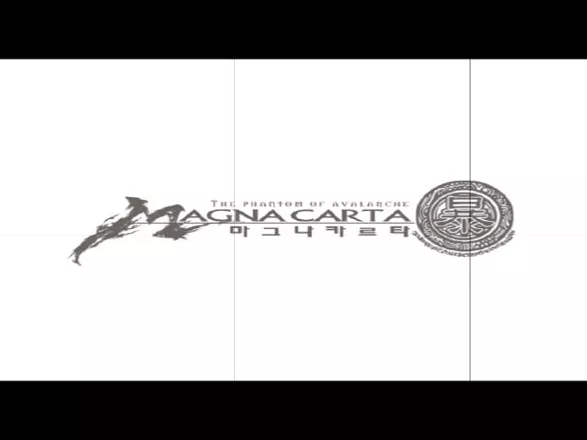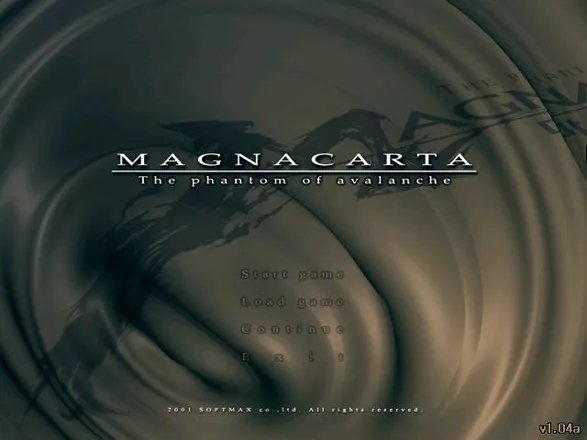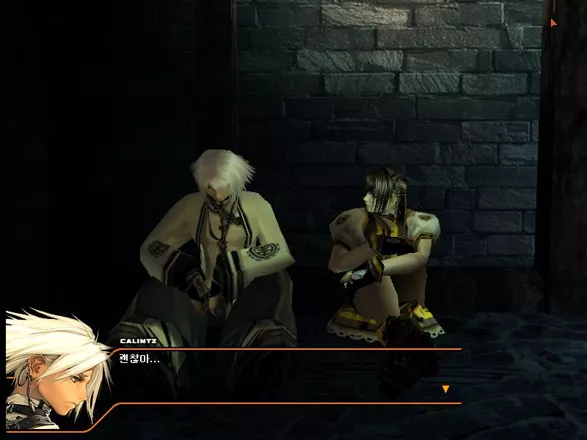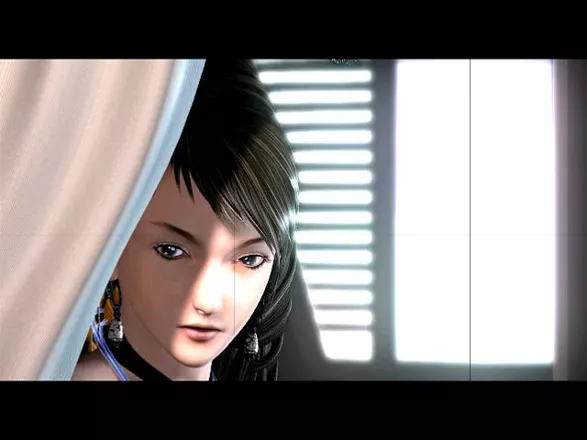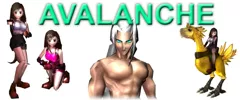Magna Carta: The Phantom of Avalanche
Description official description
Calintz is the adopted son of King Helios and a famous hero known as "The Phantom of Avalanche" due to his victorious battles against monsters. He returns to the land of Shudelmir only to find out things aren't what they seem. The new emperor has made some unpopular decisions, and now a faction known as Vermillion opposes his rule. The fallen princess Juclecia attempts to regain her throne as well. Despite tragic memories from his past, Calintz decides to stay in the city, and accepts the position as the leader of the 7th Squad of Shudelmir military. There unravels a tale of mystery, love, political intrigue, and betrayal.
Magna Carta: The Phantom of Avalanche is a Korean-made role-playing game with Japanese-style gameplay mechanics and aesthetics. Enemies attack randomly, and battles are turn-based. Characters can move across a confined battlefield during combat. Movement, spells, and attacks cost turn points, which the characters are given each turn. Characters can execute ability attacks which deplete their TP bar, as well as perform powerful combos that require the player to press keys in certain rhythmical patterns.
Carta points are awarded for defeating foes. Carta are energy patterns that roughly correspond to elemental magic and are represented by Chinese characters, The player can distribute carta points freely to many characters attributes which affect their spells, range, attack and defense. The system is somewhat similar to the junctioning of Guardian Forces in Final Fantasy VIII.
Groups +
Screenshots
Credits (Windows version)
143 People (137 developers, 6 thanks) · View all
| Executive Producer | |
| Game Design | |
| Project Manager | |
| Character Design | |
| Scenario | |
| Screenplay | |
| Manual Design | |
| Script Editors | |
| Assistant Script Editors | |
| Chief of Programmers | |
| Lead Programmer | |
| Field Programmer | |
| Install and Tool Programmer | |
| Programmers | |
| Chief of Artist | |
| Lead Character Artist | |
| [ full credits ] | |
Reviews
Players
Average score: 2.7 out of 5 (based on 1 ratings)
The Good
Even though Korean RPGs have been around since 1987 and had some surprisingly good iterations, the first one that gained recognition outside of its homeland was Rhapsody of Zephyr, made by soon-to-become-famous Softmax. In Phantom of Avalanche, they left their only RPG series and started something new - something flashy, three-dimensional, and fairly ambitious. The conclusion was, sadly, not quite as exciting as the premise.
But first the good things: the battle system is quite interesting and in any case makes more sense than the awful mess found in its sequel. Then again, I'm not sure I entirely approve of class-less characters that can be customized in any way without any limitations or defining characteristics. That is probably a matter of taste; in itself, the idea of upgrading characters by earning elemental magic points and "equipping" them on individual attributes. Though I do recall a certain game belonging to a certain fairly popular series that did pretty much the same earlier, only there it was called "drawing" magic and equipping "GFs".
More interesting is the typically Korean insistence upon tactical movement in battles. Even lesser-known RPGs stuck to it, helping it to become a sort of a common denominator. There are very few Asian RPGs out there who have such combat without becoming "tactical RPGs", i.e. games without any exploration. Phantom of Avalanche has this type of combat and scores some plus points for that.
The story is pretty good. Many characters with their own agendas; troubled hero with a mysterious past (and way too many homoerotic insinuations); political intrigues; supernatural mumbo-jumbo; memories, conflicts, desires, ambitions, friendship and betrayal - you've got it all here. Like the rest of the game, a lot of things are there just for show, but I suppose that comes with the genre.
The game could have looked great if characters had any facial animations. But their gestures are very well-done, and a lot of attention was paid to dressing them up. There is something oddly appealing in those strange characters. Hyung-tae Kim is certainly a talented artist; it's a pity, though, that with all their extravagance the characters lack warmth, and end up being almost as disorienting as the game's abysmal camera.
The Bad
Phantom of Avalanche confirms some of the worst prejudices against self-involved, pompous Asian RPG design that was popularized by Final Fantasy VIII. If you disliked that game, prepare to loathe Phantom of Avalanche; if you liked it, understand that Phantom of Avalanche is Final Fantasy VIII without dramatic direction, varied gameplay, or emotional attachment.
The endearing pre-rendered graphics of Softmax's previous works are gone; instead, we have 3D that adds nothing to the gameplay but takes away a lot of our time. Every battle is a drawn-out exchange of attacks that sucks the energy out of the player before he even begins to enjoy the unusual character growth system. You watch how enemies slowly approach, and then move stiff 3D models and select commands until the ordeal is over. It is definitely worse than in Final Fantasy VIII; there, the battles at least had visual dynamics and eye candy. Embarrassingly, Phantom of Avalanche shares many of its flaws with Brutish Mine, a hentai game made by a handful of people. It takes all the weak parts of Final Fantasy VIII, but fails to reach the quality of its presentation.
Softmax also took everything that was bad in Rhapsody of Zephyr and multiplied it in Phantom of Avalanche. Long-winded, empty screens in dungeons and aggravating linearity took a lot of fun even out of the better game of the two; here, coupled with agonizing loading times (they are still there on a powerful computer ten years later!) that break exploration into disrupted segments, the level design only makes you want to skip to the end. The final insult is the appalling camera: some of the angles are unfathomably awkward, and the camera also loves to re-position itself after every battle or cutscene, adding even more orientation troubles. Want to see levels that are linear and confusing at the same time? Play Phantom of Avalanche.
Once you get past the initial (and absolutely misleading) impression of vastness, you'll be confined to a tiny game world that barely deserves to be called like that. After all the political-supernatural fuss in the opening, everything the game has to offer is one (!) town with a couple of boring dungeons, and a plot structure that involves repeatedly performing dull missions when you are not enduring excruciatingly long, badly directed cutscenes. Like everything else in the game, this makes you feel like you have been cheated. A game that promises to be "deep" and "epic" ends up being far behind 16-bit RPGs in pretty much every category. It is mind-boggling how little substance this game actually has.
Older Asian RPGs could be flawed and charming at the same time. There is no charm in Phantom of Avalanche, neither visually nor in the narrative. The androgynous main hero is weird at best; for the most part the characters are cold and hard to get attached to. They are exotic in a gratuitous way, with plenty of flair but little substance. Voice acting sorely lacks emotion. And cutscene direction is on par with the rest of camera work: amateurish and unable to convey the drama of the storyline.
The Bottom Line
With all its interesting ideas, Phantom of Avalanche is a typical example of an overblown game: lots of shine and glamor to hide a so-so gameplay and unbelievably lame controls that make playing it a painful experience. Lacking the charm of old Asian RPGs, it sadly proves (together with its equally annoying sequel) that Softmax has forgotten what made it great and fell victim to its own dubious ambitions. Go back to Rhapsody of Zephyr, or give Hicom a chance on the Korean role-playing stage.
Windows · by Unicorn Lynx (181775) · 2014
Analytics
Upgrade to MobyPro to view research rankings!
Related Sites +
-
Magna Carta: The Phantom of Avalanche
Home page
Identifiers +
Contribute
Are you familiar with this game? Help document and preserve this entry in video game history! If your contribution is approved, you will earn points and be credited as a contributor.
Contributors to this Entry
Game added by Ken Davis.
Additional contributors: Jeanne.
Game added December 3, 2005. Last modified February 22, 2023.
